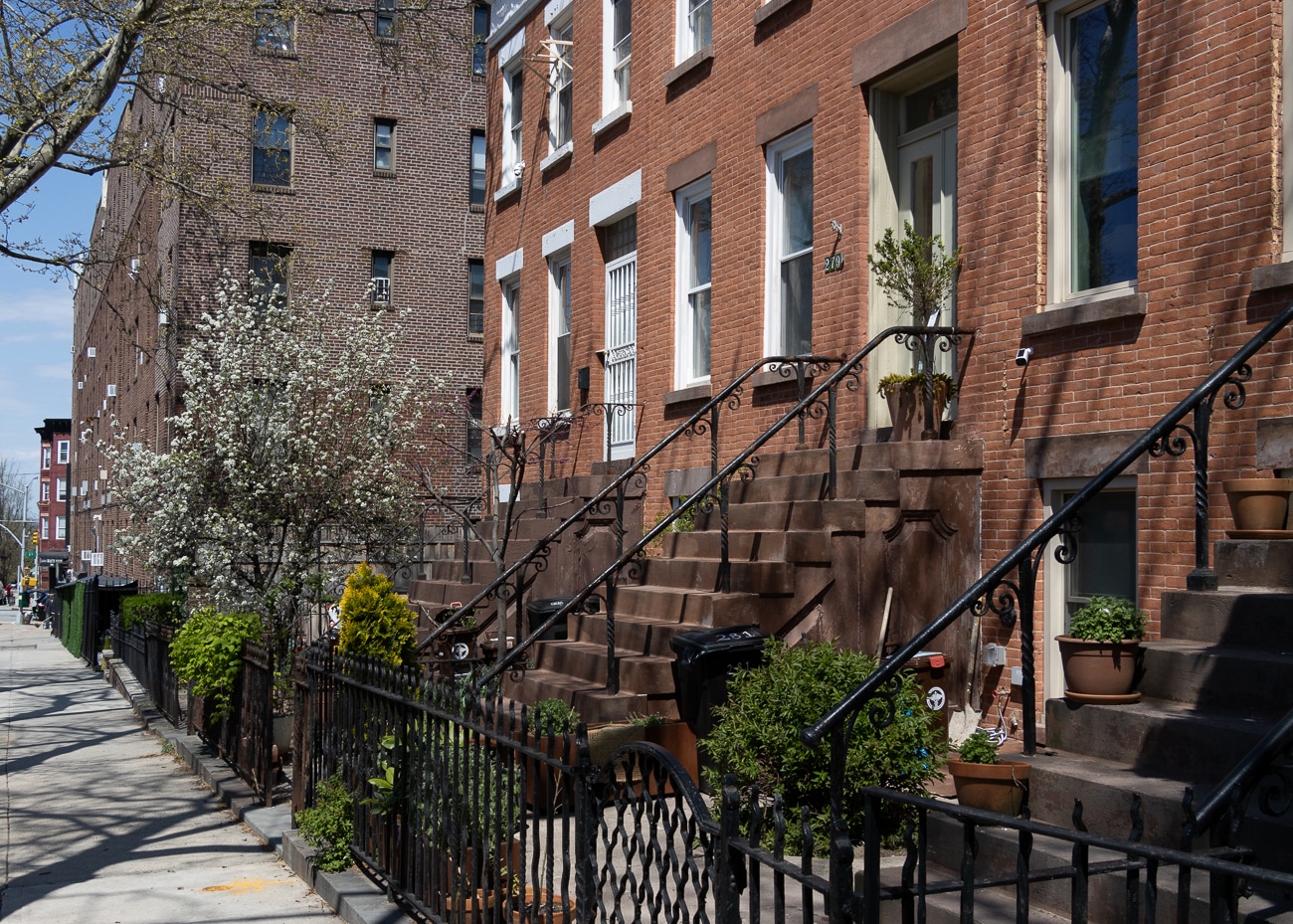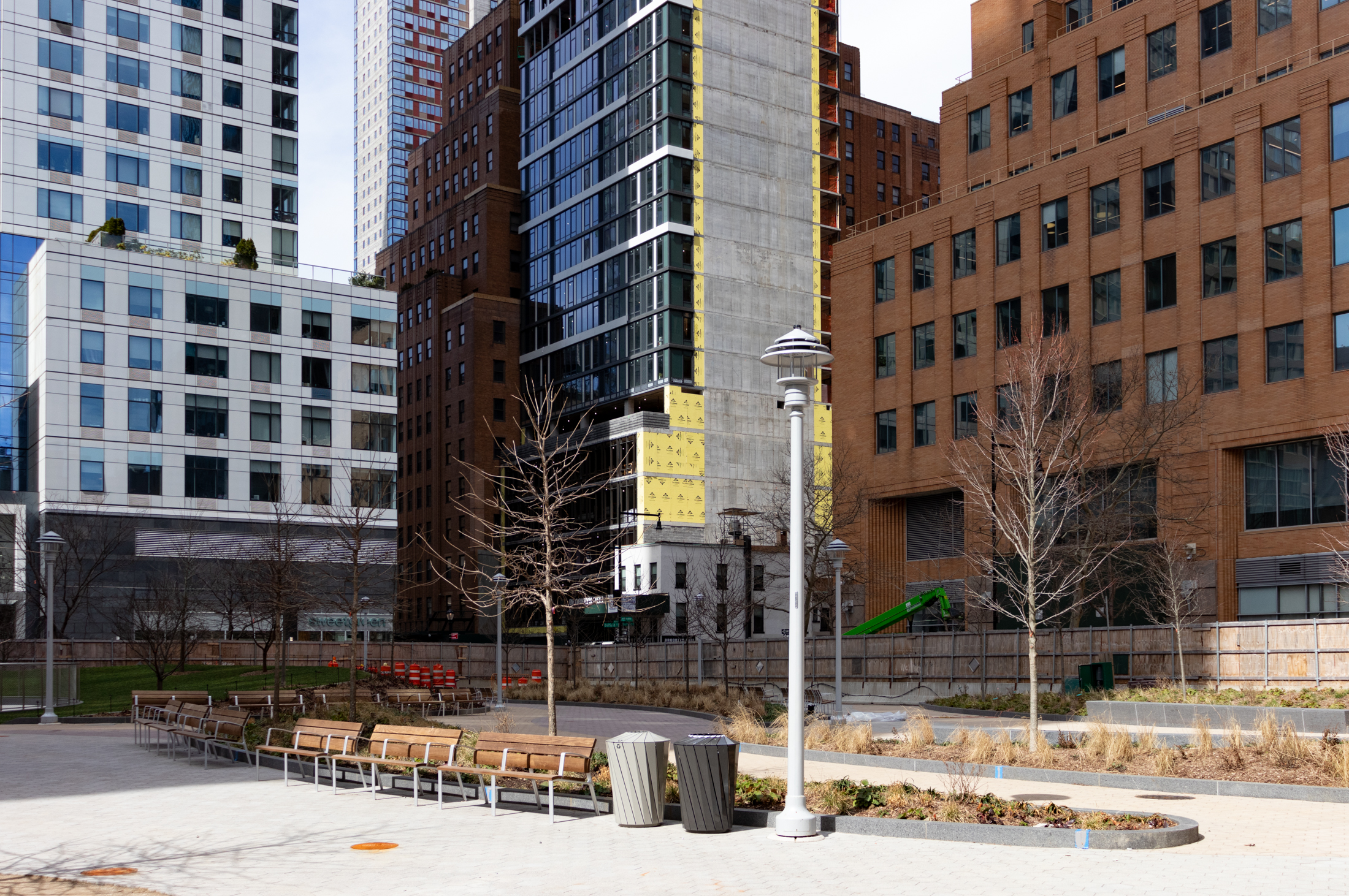Building of the Day: 418-434 Fulton Street
Brooklyn, one building at a time. Name: Originally the Wheeler Building, then Abraham and Weschler, then Abraham & Straus, now Macy’s Address: 418-434 Fulton Street Cross Streets: Gallatin Place and Hoyt Street Neighborhood: Downtown Brooklyn Year Built: 1883 Architectural Style: Second Empire with much alteration on ground floors Architect: Unknown Landmarked: No, but should be,…

Photo via Municipal Art Society
Brooklyn, one building at a time.
Name: Originally the Wheeler Building, then Abraham and Weschler, then Abraham & Straus, now Macy’s
Address: 418-434 Fulton Street
Cross Streets: Gallatin Place and Hoyt Street
Neighborhood: Downtown Brooklyn
Year Built: 1883
Architectural Style: Second Empire with much alteration on ground floors
Architect: Unknown
Landmarked: No, but should be, as should be much of the Fulton St. shopping corridor
The story: Anyone who has ever been downtown and stood in front of what is now Macy’s knows that this store is not one building, but several buildings joined together by a common façade along Fulton and Livingston Streets. There is the main store building today; a large Art Deco era store, then this building, a large mansard roofed, Second Empire gem. If it’s possible to mentally strip away the Deco building altogether, as well as the modern 20th century display windows that stretch from one end of the store to the other, you might be able to imagine the wonderful store that Abraham and Weschler established on this site. They purchased what was called the Wheeler Building in 1881, and established one of the poshest department stores in Brooklyn and all of New York City. But what was the Wheeler Building?
The Fulton Street corridor between Boerum and Flatbush was slowly developing as Brooklyn’s shopping and entertainment district by the Civil War. The homes and churches that lined Fulton fell one by one to the wreckers, as large commercial loft buildings, theaters and stores replaced them. The building housing Gage and Tollner is one of the last remaining brownstone homes of that era. The plot where Wheeler built his building had been the cemetery of the nearby Dutch Reformed Church. Both church and graveyard were removed in the growth of downtown. The large, now empty hopefully, lot became a circus ground, where travelling circuses pitched their tents to entertain the masses.
Mr. Andrew S. Wheeler was a keen observer of trends and he realized that this was going to be a prime site. He bought it, and in the early 1870s, built this large, five story, mansard roofed Second Empire loft and store building. He thought that Fulton Street was going to take off, and he was ready for the merchants and other tenants to come on in. Unfortunately for him, he was a man ahead of his time. Below his building was next to nothing. A few scattered buildings and many empty lots. Fulton Street’s time had not yet come, and Wheeler was forced to rent to anyone who needed the space. According to newspaper reports, there was space for several storefronts along the street.
Between 1873 and 1881, the Wheeler Building had a multitude of tenants. The top floor held lodge and meeting rooms, and was home to chapters of the Odd Fellows and other fraternal and beneficial organizations. Downstairs, an auction house took up space in the rest of the building, as did A.R. Samuel’s Billiard Parlor, the Olympic Theater, which was somewhat notorious for some reason, a saloon, and a side-show museum called J.B. Bunnell’s Dime Museum. They advertised such thrills as a bearded lady, “the Arab Giant” who was eight feet tall, and the 35 pound “Living Skeleton.”
By 1881, the Brooklyn Bridge was in construction, and everyone who was paying attention knew that Brooklyn was going to take off once the bridge was finished. Most of the merchants of the day were not on this part of Fulton Street at that point, they were still in the Fulton Ferry area, or in the part of the Heights/Downtown area which now makes up the entirety of Cadman Plaza. That’s where Abraham & Weschler were located, at 297 Fulton Street, much closer to Fulton Landing.
They bought the Wheeler building and several surrounding lots around it in 1881. They were not quite yet ready to abandon their store and move everything downtown quite yet, but they knew that it would be a fortuitous move when they did move. They weren’t the only ones. Rival store owner Frederick Loeser also invested in a large plots of land further down Fulton Street, and he too was ready to build a new building, in anticipation of the prosperity of Fulton Street that was coming when the bridge was a reality.
According to the full-paged ad that Abraham & Weschler put in the Brooklyn Eagle on Feb. 14th 1885, right before the grand opening of the store, they practically rebuilt the Wheeler building, keeping only the upper façade. The interior had been gutted, and new large display windows were installed on the main floor, as well as a grand new entryway. The result would be the most impressive store Brooklyn would ever see. The grand opening, which I’ll write about at another time, was as opulent and over the top as can be imagined.
Andrew Wheeler, who lived nearby on Gallatin Place, died in 1882, three years before Abraham & Weschler opened their opulent and amazing new store. He was only 61, and died in Cuba, where he had gone for his health. His body was shipped home for a Brooklyn burial. He would have loved what Fulton Street would become only 20 years after his death: the shopping mecca of Brooklyn. His building, built when people laughed at him, would be at the center of it all. GMAP











The bodies from the Dutch Reformed Church graveyard on Fulton and Hoyt were re-interred in a plot owned by the church in Cedar Dell, Green-Wood Cemetery. Many of the tombstones are old brownstone with death’s heads, etc., dating back to the 18th century.
I wish the Dime Museum was still open. At least we have the new Morbid Anatomy Museum for thrills of a macabre nature.